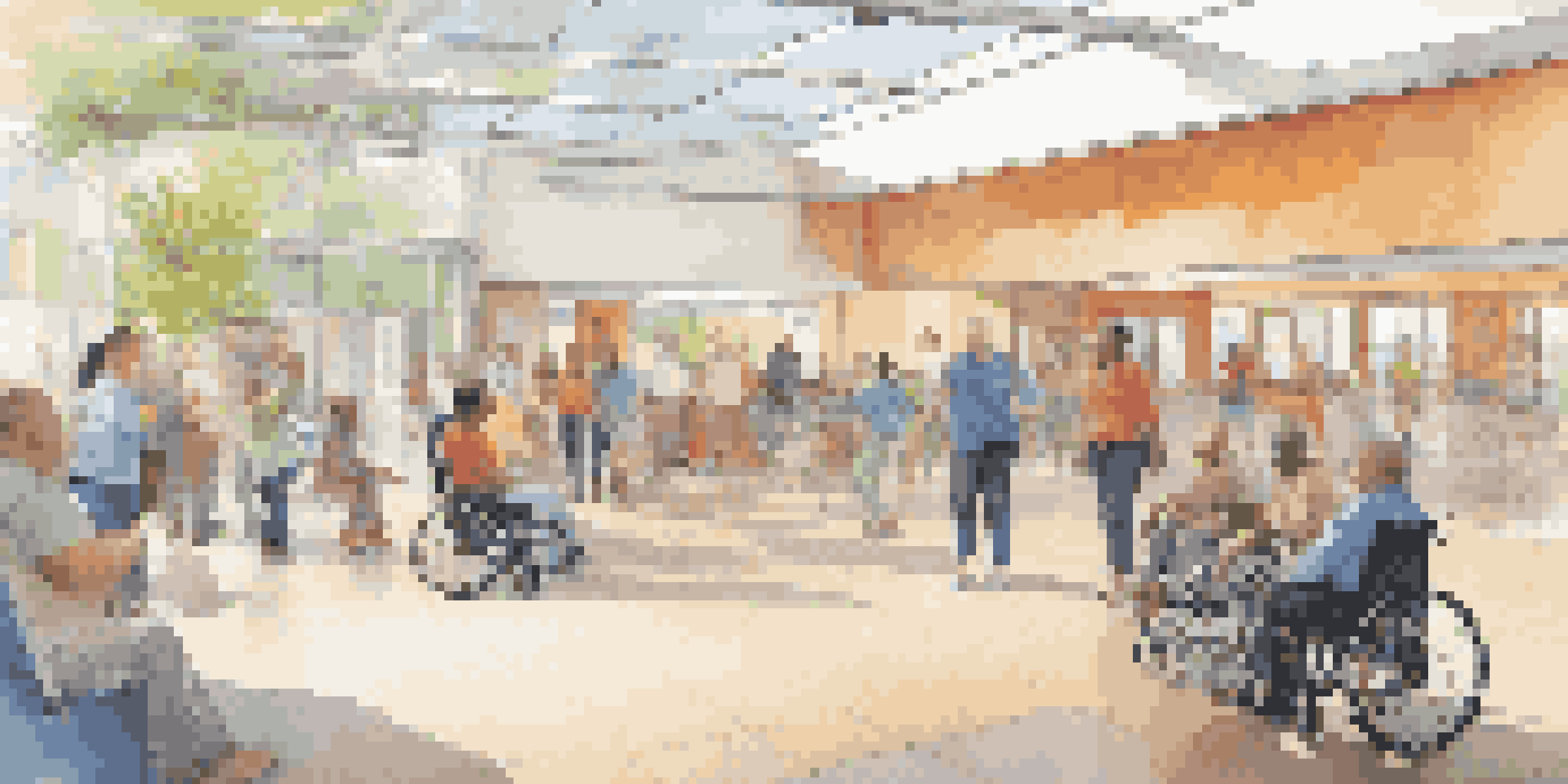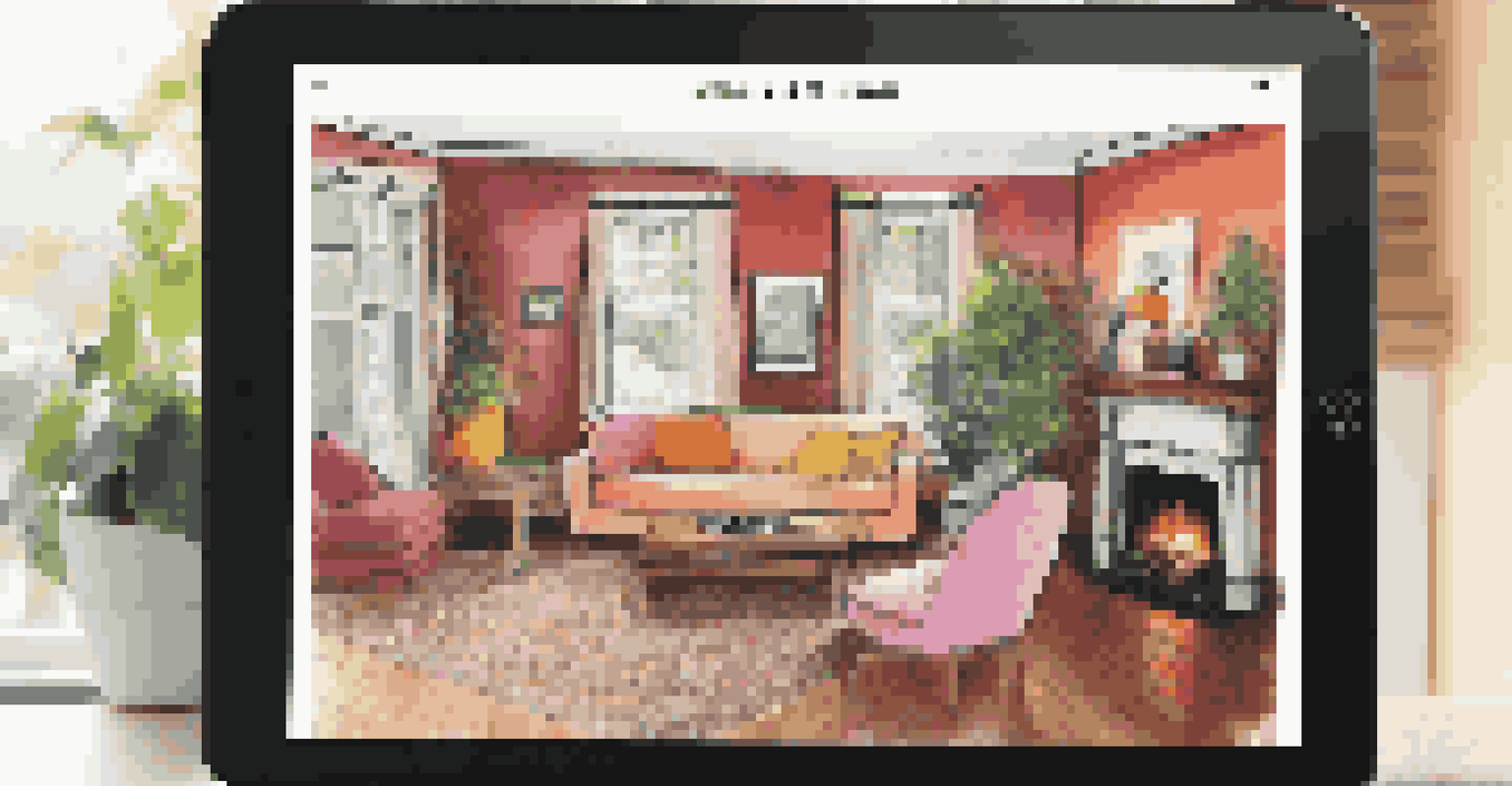How to Create a Resource Guide for Accessible Living

Understanding Accessible Living and Its Importance
Accessible living means creating environments that cater to everyone, including those with disabilities. It’s about ensuring that people can navigate spaces comfortably and confidently. By understanding the principles of accessible living, we can foster inclusive communities that value diversity and equal opportunity.
Accessibility allows us to tap into everyone’s potential.
Many might think of accessibility solely in terms of physical spaces, like wheelchair ramps or elevators. However, it also encompasses digital accessibility, ensuring that websites and apps are usable for everyone. This holistic view is crucial for developing a resource guide that truly serves the community.
Creating an accessible living resource guide is not just about compliance with laws; it's about empathy and understanding different needs. By prioritizing accessible living, we can enhance the quality of life for many individuals, making our communities richer and more vibrant.
Identifying Your Target Audience and Their Needs
The first step in creating a resource guide is identifying who you are serving. Are you targeting individuals with mobility impairments, seniors, or families with children who have special needs? Understanding your audience will help tailor the guide to their specific requirements.

Engaging with your audience through surveys or interviews can provide valuable insights. Ask about their daily challenges and the resources they wish they had access to. This feedback will be instrumental in ensuring your guide is relevant and practical.
Embrace Inclusive Resource Guides
Creating an accessible resource guide fosters empathy and enhances community quality of life.
Remember, the needs of your audience can vary widely. For example, a person with a visual impairment may require different resources compared to someone with a hearing impairment. Keeping these variations in mind will help you create a more inclusive guide.
Researching Available Resources in Your Community
Once you’ve identified your audience, the next step is to research existing resources in your community. This can include local organizations, support groups, and businesses that offer accessible services. A thorough inventory will ensure that your guide is comprehensive.
The only way to make a difference is to make a commitment to support the community.
Don’t forget to explore both online and offline resources. Online forums and social media groups can be goldmines for information and personal experiences. Additionally, local libraries or community centers often have resources that may not be widely advertised.
As you compile this list, pay attention to the reliability and reputation of each resource. It's essential to include services that genuinely cater to the needs of people with disabilities, ensuring that your guide serves as a trustworthy tool for its users.
Organizing Resources Effectively for Easy Navigation
After gathering information, the next challenge is organization. Structure your guide in a way that makes it easy for users to find what they need quickly. Consider categorizing resources by type, such as transportation, healthcare, housing, and education.
Using clear headings and bullet points can enhance readability. For instance, if you have a section on transportation, you might list accessible public transit options, ride-sharing services, and specialized transportation providers. This clarity can significantly improve user experience.
Target Audience Matters
Identifying the specific needs of your audience ensures the guide is relevant and effective.
Additionally, consider incorporating a search function if your guide is digital. This feature allows users to easily locate specific resources, making your guide even more user-friendly.
Including Personal Stories and Testimonials
One of the most powerful ways to enhance your resource guide is by including personal stories and testimonials. Hearing from individuals who have benefited from specific resources can provide valuable insights and encouragement to others in similar situations. These narratives can make the guide feel more relatable and less like a clinical list.
Consider reaching out to local community members who are willing to share their experiences. Personal anecdotes can highlight the real-world impact of resources, making them more appealing to your audience. For example, someone might share how a local support group helped them navigate a challenging situation.
These stories not only humanize your guide but can also inspire hope and resilience in readers. By showcasing real-life applications, you can motivate others to take action and utilize the resources available to them.
Designing a User-Friendly Layout and Format
The design of your resource guide is just as important as its content. A clean, user-friendly layout can significantly enhance readability and engagement. Use ample white space, legible fonts, and a logical flow to guide users seamlessly through the information.
Consider accessibility features in your design, such as alt text for images and high-contrast colors for text and backgrounds. This ensures that your guide is usable for individuals with various disabilities, including visual impairments.
Continuous Improvement is Key
Regular updates and user feedback are essential for maintaining the guide's accuracy and trustworthiness.
If your guide is digital, ensure it is mobile-responsive, allowing users to access it easily from their phones or tablets. A well-designed guide not only looks appealing but also functions effectively, ensuring that users have a positive experience.
Promoting Your Resource Guide to Reach the Right Audience
Creating an excellent resource guide is just the first step; the next is ensuring it reaches the people who need it the most. Utilize social media platforms to share your guide, and consider collaborating with local organizations to spread the word. They can help promote your guide to their networks, extending your reach.
Hosting community events or workshops can also be an effective way to introduce your resource guide. These gatherings provide an opportunity to engage directly with your audience, gather feedback, and foster a sense of community.

Don’t forget about offline promotion, too. Distributing printed copies of your guide in local libraries, schools, and community centers can help ensure those without internet access can still benefit from your resources.
Continuously Updating and Improving Your Guide
Creating a resource guide is not a one-time task; it requires ongoing attention and updates. As new resources become available or existing ones change, it’s crucial to keep your guide current. Establish a schedule for regular reviews and updates to ensure accuracy.
Encourage feedback from users to identify areas for improvement. This could involve surveys or informal check-ins to see how well the guide meets their needs. Constructive criticism can help you refine and enhance the user experience.
By treating your resource guide as a living document, you demonstrate a commitment to your audience. This dedication not only improves the guide but also builds trust within the community, encouraging more people to rely on it for support.